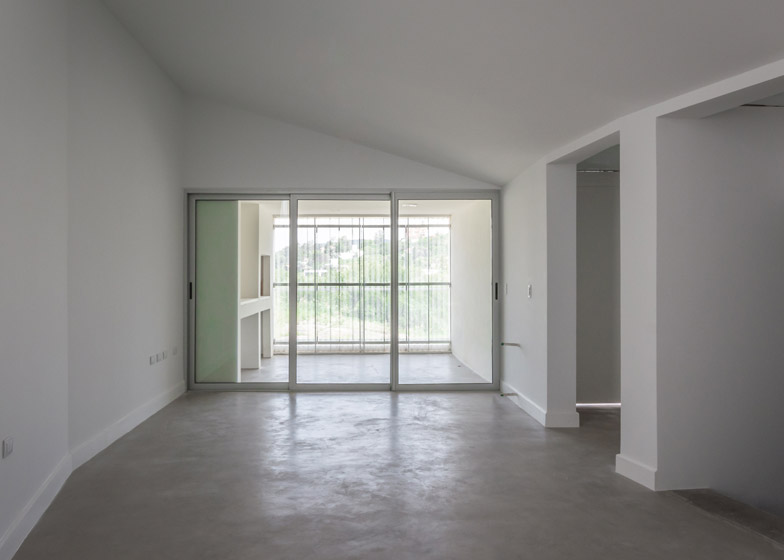These five houses in Córdoba, Argentina, each feature two wings that stretch away from the hillside to seek out the best light and views (+ slideshow).
Designed by young Argentinian architect Carlos Alejandro Ciravegna, the houses are lined up in a row that follows the topography of the site. Each building has one end rooted in the landscape and two wings that are suspended mid-air.
The design stems from a desire to impact on the site as little as possible. By lifting the ends up, the buildings leave the base of the hillside untouched.
"The land has a natural topography with steep and rocky soil that I didn't want to alter," explained Ciravegna, who presented the project as part of the 2014 Argentina biennale.
"I instead generated modular boxes whose complexity was equal to the possible levelling of the soil that could have arisen in some other proposal," he told Dezeen.
Each house is made up of two similar modules, although the arrangement is not identical for every one. Roof profiles also vary between blocks, preventing the structures looking too similar.
External walls are rendered white, as are the rooftops and exposed undersides, and there are no projecting eaves or window sills. The overall impression is of a series of simple volumes.
"This not the kind of architecture you see in Córdoba," said Ciravegna. "The basis of the idea was to create uniformity in the material, but also to give each villa its own language."
"Material and colour were selected based on local possibilities, and the idea of having a minimum impact on the environment," he added.
The project was completed for three clients. Some of the houses will be sold, but some will be rented out for short- and long-term lets, so flexibility was an important aspect of the planning.
All five residences are accessed separately via a private staircase that leads up over the rocky terrain to an entrance between the two projecting wings. Stepping stones in the lawn link these staircases with an adjacent pathway.
Inside each one, the entrance block contains a large family room with a kitchen at the back, a dining room at the centre and a sub-dividable living space at the front.
The other wing contains a pair of evenly sized bedrooms, separated by a bathroom and an indoor hot tub.
"Everything was a challenge, from generating a sophisticated design that respects the environment to the structural complexity. It was possibly the biggest challenge in my professional life," added Ciravegna.
Photography is by Gonzalo Viramonte.
Project credits:
Architect: Carlos Alejandro Ciravegna
Structural calculation: Gustavo Gabriel Gonzalez




















